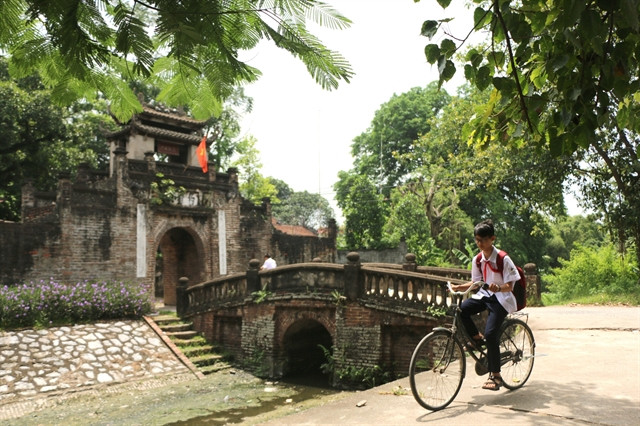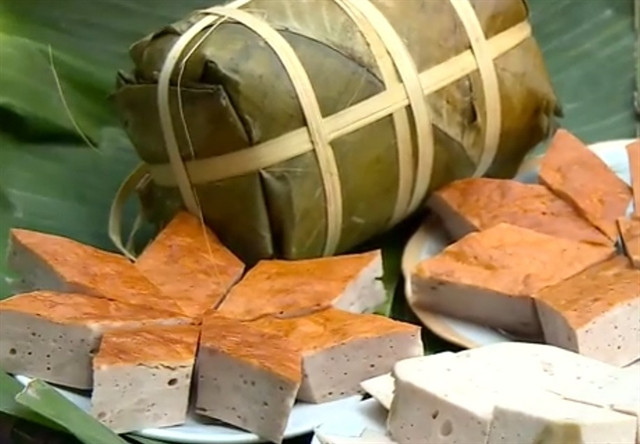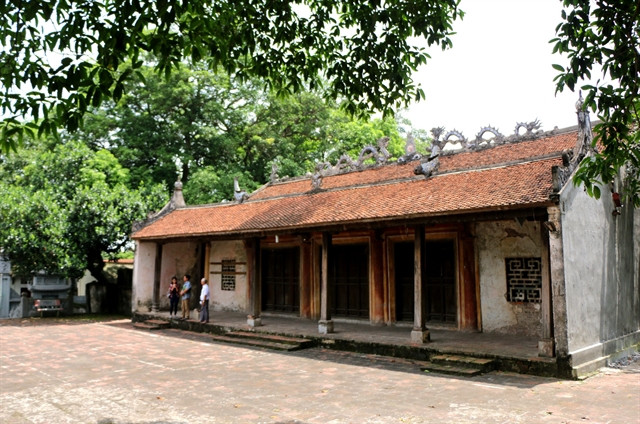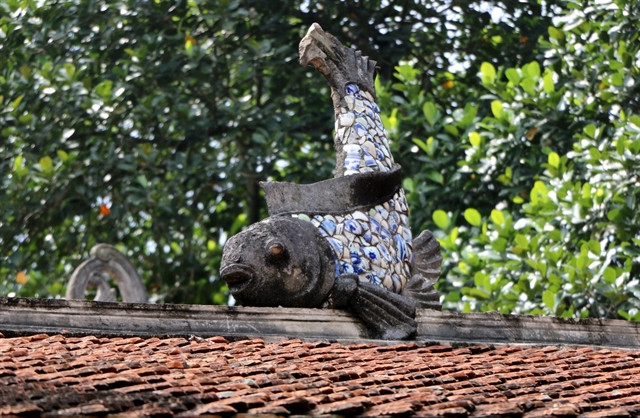 |
| The ancient gate of Ước Lễ Village. — VNS Photo Đoàn Tùng |
Ước Lễ Village is a popular tourist destination not only due to its traditional craft of making pork paste but also because of the simple beauty of its ancient Vietnamese architectural works.
Located approximately 30km southwest of Hà Nội, in Tân Ước Commune, Thanh Oai District, this village dates back 500 years. Its fame originates from the giò chả (pork paste) making profession that has been passed down through the generations.
 |
| Ước Lễ’s delicious pork paste is famous across the country. — VNS Photo Văn Giáp |
According to the village elders, during the Mạc Dynasty (1527-1592), a royal concubine from Ước Lễ Village taught the villagers the art of making pork paste. This traditional craft became synonymous with Ước Lễ Village, and its reputation spread throughout Vietnam and even beyond its borders.
However, the village's appeal extends beyond its renowned pork paste. It captivates tourists with its status as an ancient village that preserves the essence of Vietnamese culture. Within the village, visitors will find ancient village gates and several century-old houses.
Entering the village, visitors immediately encounter the ancient village gate. This unique and majestic architectural masterpiece shows the distinct sculptural art style of the Mạc Dynasty. Situated behind a small curved bridge over a shallow moat, the gate is adorned with a pair of parallel sentences in Hán (Chinese characters). These sentences express the villagers' desire for prosperous and successful business endeavours when venturing outside the village.
 |
| Ước Lễ Village’s Communal House. — VNS Photo Đoàn Tùng |
The village gate has an arched structure reminiscent of the roofs of ancient Vietnamese pagodas. It consists of two floors: the lower level features a plain brick wall and a wide archway, while the upper level houses a watchtower with a plate inscribed with the words 'Good customs to be followed.' These words were bestowed by the court in 1851, reflecting Ước Lễ Village's history of taking care of the poor.
Surrounding the gate and the entire village is a small moat and dense bamboo hedges, typical of northern villages, serving as a protective barrier against potential thieves.
On the back of the gate, three words “Thiểu cao đại” are inscribed. These words signify that the previous generations of the village have performed numerous virtuous deeds, ensuring prosperity for future generations. They also serve as a reminder to villagers to live ethically and engage in good deeds wherever they go, leaving behind a legacy of merit for their descendants.
Approximately 50m from the village gate lies the traditional ancient market, nestled in the shade of towering trees. The market's tile roofs, weathered by time, evoke a sense of nostalgia. According to the village elders, the market has existed since the construction of the main gate. The market operates for only two hours in the early morning, when traders bring their produce and sell it to the locals.
The village proudly retains its ancient and rustic characteristics, showcasing a typical northern countryside scene with banyan trees, communal wells, courtyards and ancient houses.
Local resident Trang Công Trụ said, "Currently, Ước Lễ Village has around ten ancient houses, all preserving their original architecture from hundreds of years ago. The deeper you explore the village, the more ancient houses you will encounter. My own family's house, which is around 200 years old, has been passed down over generations."
Most of the ancient houses in the village feature five-pillar architecture, red-tiled roofs, and sculptural motifs emblematic of the imperial period's architectural style. The antiquity and longevity of these houses attract domestic film crews seeking authentic settings for their productions.
Nguyễn Thị Hương, a 75-year-old resident of one of the oldest houses in the village, said: "The passage of time has given my house an ancient, moss-covered appearance, accompanied by signs of wear and tear. Although it has undergone repairs and restorations, my family strives to preserve its architectural features. This is a source of pride not only for my family but for the entire Ước Lễ Village as well."
In addition to the numerous ancient houses, the village boasts six ancient wells dating back several hundred years. These wells are closely associated with religious structures within the village, such as communal houses and pagodas.
 |
| A fish on the top of the village communal house. — VNS Photo Đoàn Tùng |
As we bid farewell to the village, the peaceful beauty, the refreshing air, and the timeless allure of the green bamboo, areca trees, walls, houses and gates remain etched in our memories forever. VNS